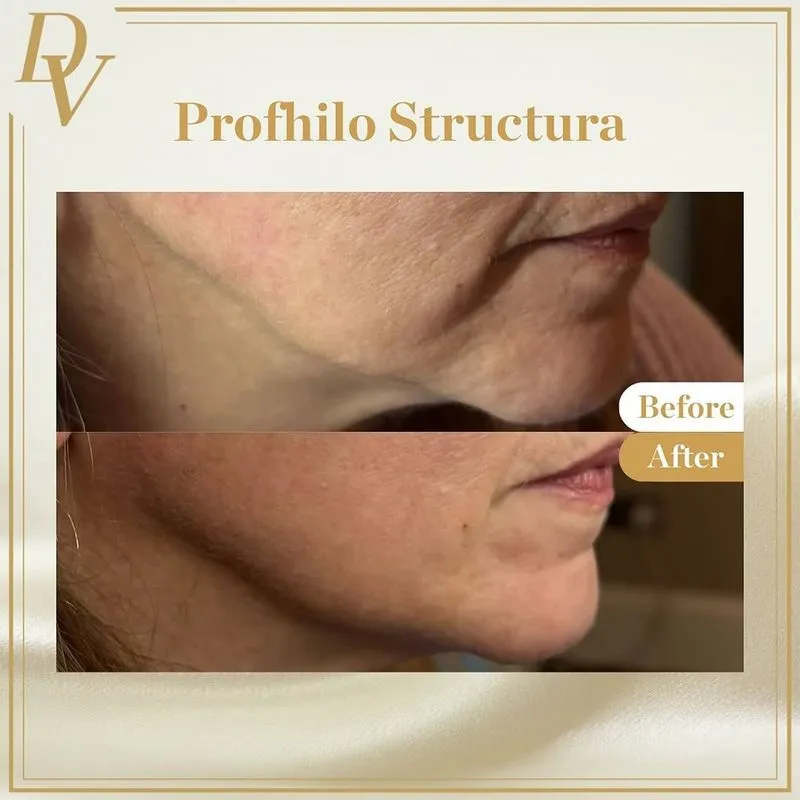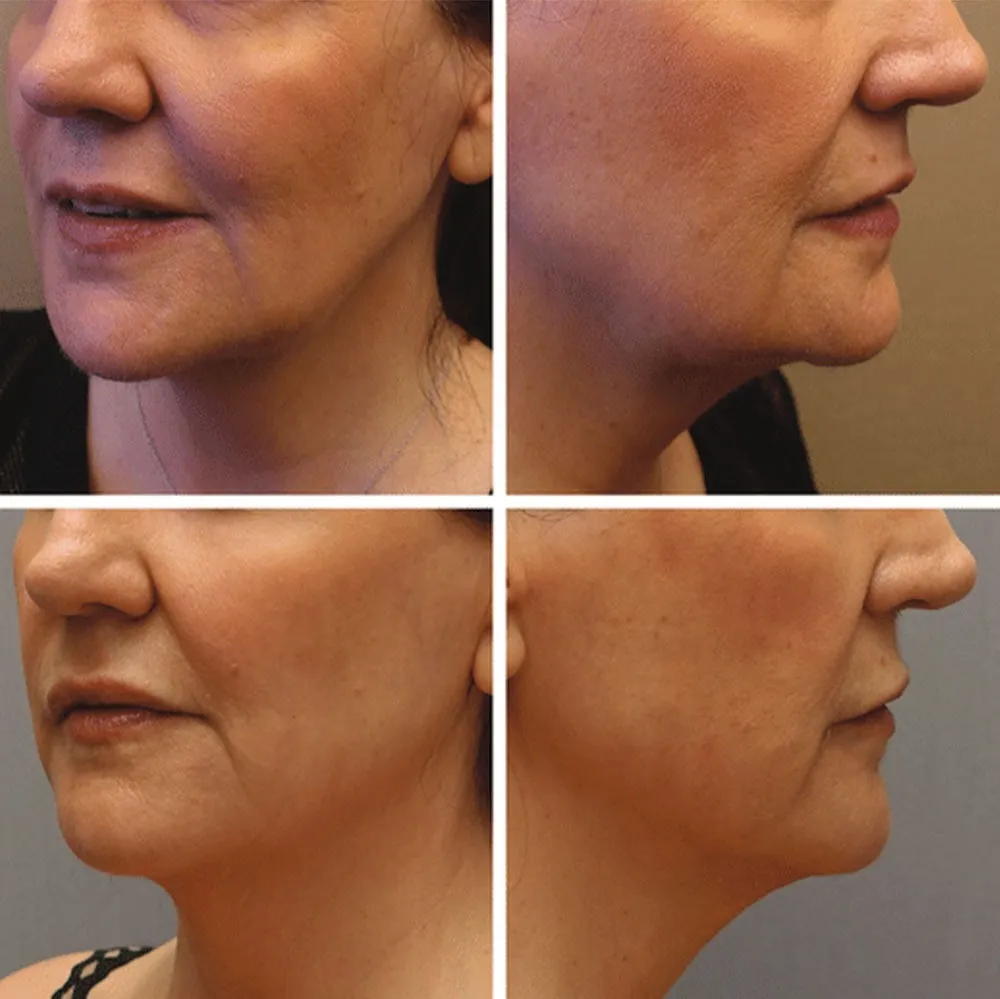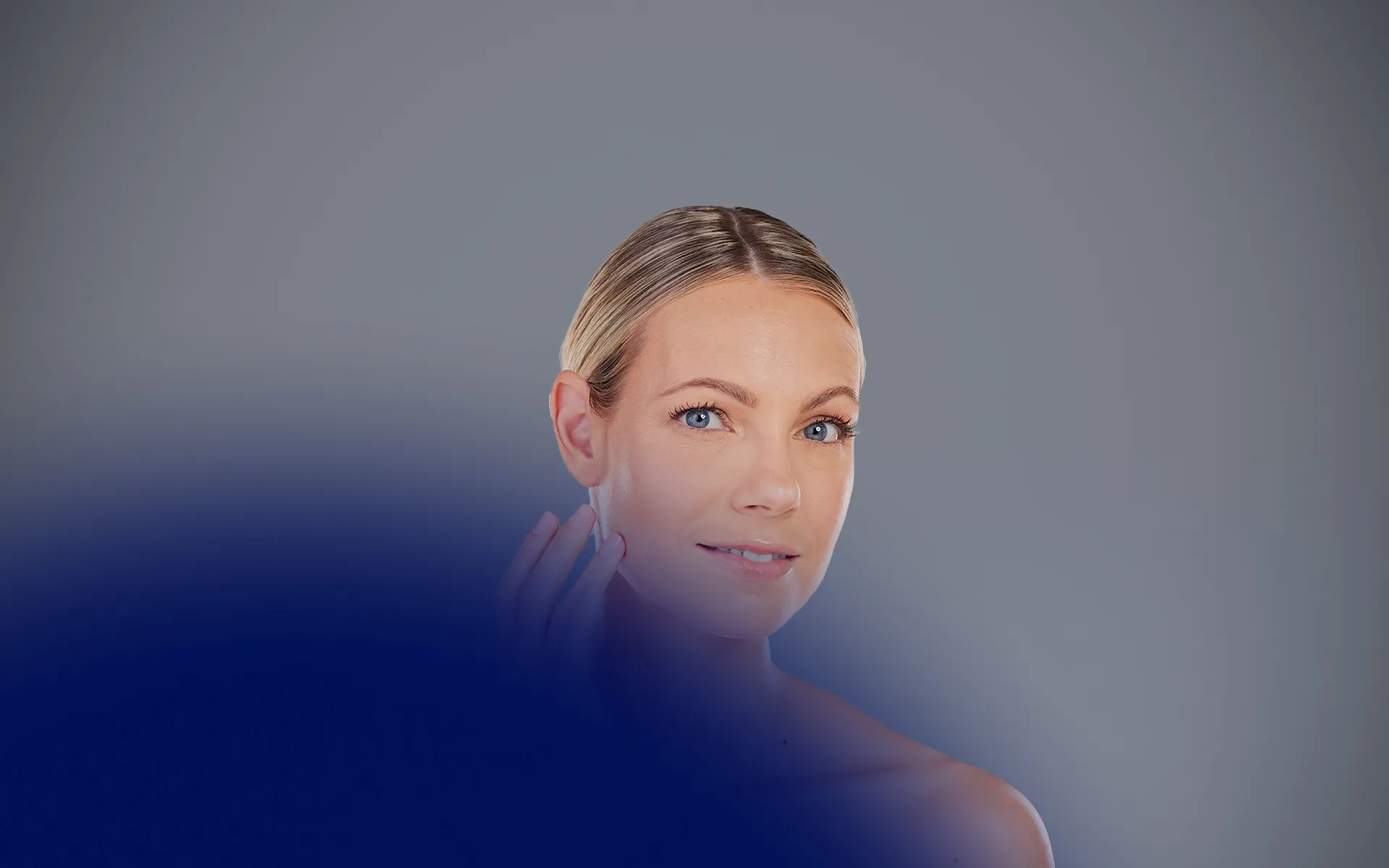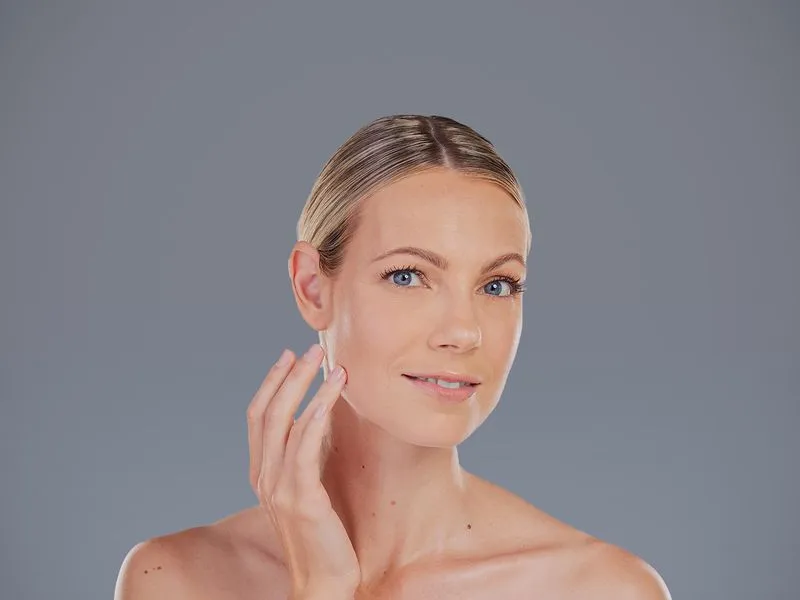
Sagging jowls are a common sign of ageing that can affect both men and women. As the skin loses elasticity and fat shifts from the mid-face downward, the jawline becomes less defined. Over time, the lower face may appear tired, heavy, or uneven. For patients, this change often impacts self-confidence. For practitioners, it presents an opportunity to restore youthful contours using injectable treatments that deliver visible, natural-looking results.
In this blog, we’ll look at what causes sagging jowls, how different treatments work, and what real results look like sagging jowls before and after.
Whether you're a medical aesthetician looking to master lower-face rejuvenation or a patient exploring non-surgical options, this article provides essential insights.
What Causes Sagging Jowls?
Jowls typically develop due to a combination of ageing, gravity, volume loss, and muscle activity. As we age, our skin's collagen and elastin production decreases. These proteins help keep skin firm and resilient. With their decline, the skin becomes thinner and more prone to sagging. Simultaneously, the fat pads in the mid-face migrate downwards, which reduces cheek volume and places additional weight on the lower face. Gravity pulls this soft tissue further, leading to visible jowls.
Other contributing factors include excessive sun exposure, smoking, weight loss, genetics, and repeated facial expressions that activate the platysma and depressor anguli oris muscles. Understanding these factors helps determine which treatment is most suitable.
.webp)
Dermal Fillers: Volume Restoration and Contour Correction
Dermal fillers are a frontline injectable treatment for sagging jowls. They restore volume in the cheeks, jawline, chin, and pre-jowl sulcus, all of which help lift the lower face and improve definition.
Hyaluronic acid (HA)-based fillers like Juvederm Voluma, Restylane Lyft, and Restylane Contour are commonly used. These products have high G prime, meaning they offer structure and lift. When injected correctly, they support the skin and mimic the effects of a subtle facelift without surgery.
Practitioners often begin by addressing the mid-face. Adding volume to the malar (cheekbone) region provides an upward pull, relieving the pressure that causes jowling. Next, the pre-jowl sulcus is treated to fill the hollow area next to the chin. Fillers in the jawline and chin add structural support and sharpen the contour.
For safety and precision, many injectors use cannulas when treating the jawline and either needles or cannulas for the cheeks. The procedure is relatively quick and well-tolerated. Results are often immediate, with full settling visible after 1 to 2 weeks. Depending on the product and the patient’s metabolism, results can last from 6 to 18 months.
Notice the visible improvement in jawline definition after targeted dermal filler treatment.
Combining dermal fillers for sagging jowls with Botox can enhance and prolong the lifting effect, particularly in patients with active lower-face muscles.
Explore how to perform this treatment safely in the Full Face Live Injection course by HubMed Ed.
.webp)
Sculptra: Collagen Stimulation for Gradual Lifting
While HA fillers provide instant results, biostimulatory injectables like Sculptra work more gradually. Sculptra is made from poly-L-lactic acid (PLLA), a compound that stimulates the body to produce new collagen. Instead of acting as a filler, Sculptra encourages tissue regeneration from within.
When treating sagging jowls, Sculptra is injected into the lower cheeks and jawline to improve skin quality, volume, and elasticity. Over a period of weeks to months, the treated areas become firmer and more lifted.
This makes Sculptra ideal for patients with early signs of laxity or for those who prefer gradual, natural changes. It is also suitable for patients who are not good candidates for HA fillers due to frequent movement in the lower face. The results appear progressively and may last 18 to 24 months or more, depending on the patient’s collagen response.
Subtle yet powerful lift and improved firmness were seen after Sculptra injections targeting collagen restoration across the lower face.
Training in collagen stimulators is essential. Learn how to use them effectively in HubMedEd’s Skin Tightening Training.
Botox: Reducing the Downward Pull
Botox, a neuromodulator, plays a supportive role in lifting sagging jowls. It works by relaxing muscles that pull the face downward. When used alongside fillers or Sculptra, Botox enhances its lifting effect by neutralising opposing muscle forces.
Botox for sagging jowls is typically injected into two key muscles:
- Platysma: a broad, thin muscle that extends from the chest to the jaw. It pulls the lower face downward when active.
- Depressor anguli oris (DAO): located near the corners of the mouth. It drags the corners down, contributing to a sad or tired look.
By weakening these muscles, Botox allows the upper facial muscles to create a lifting effect. This technique is subtle but impactful, especially in combination treatments.
Results begin to show within 5 to 7 days and last around 3 to 4 months. Repeat sessions are needed to maintain the effect.
This patient achieves a more defined jawline and lifted lower face after receiving targeted Botox injections to relax the muscles that pull the skin downward.
Get expert training in facial muscle injections in HubMedEd’s Tired Look Full Face Live Injection course.
.webp)
Profhilo Structura: Tissue Regeneration Without Volume
Profhilo Structura is a newer injectable that combines high and low-molecular-weight hyaluronic acid. Unlike traditional fillers, it does not add volume. Instead, it improves skin firmness, hydration, and elasticity by encouraging collagen and elastin production.
Profhilo Structura is particularly effective for patients with thin, sagging skin who do not want volume in the lower face. It is injected into the superficial fat compartments near the preauricular area and zygomatic arch. These areas affect the tissue tension around the jowls.
The protocol involves two sessions spaced 30 days apart, followed by maintenance every 4 to 5 months. Patients report smoother skin, improved firmness, and a noticeable lift within 4 to 6 weeks.
Improved skin texture and firmness following Profhilo Structura treatment targeting sagging and crepey skin.
This regenerative approach is also safer for patients with thinner skin or lower filler tolerance.

ATX-101: Targeting Fat Pads in the Jowl
Some patients develop sagging jowls due to excess fat rather than just volume loss or skin laxity. In such cases, ATX-101 (known commercially as Kybella in the US or Belkyra elsewhere) can be used to reduce unwanted fat under the jawline.
ATX-101 contains deoxycholic acid, a compound that breaks down fat cells. When injected into the jowl area, it dissolves small pockets of fat that add to facial heaviness. This improves jawline definition and reduces the prominence of sagging skin.
Care must be taken to avoid major nerves in the lower face. Treatment usually requires 1 to 2 sessions, spaced weeks apart. Swelling, tenderness, and numbness are common side effects but usually resolve on their own.
This patient shows a visibly slimmer and more contoured jawline after targeted ATX-101 injections to reduce excess fat in the jowl area.
Studies show that 98% of patients treated with ATX-101 experience visible improvement in the jowl area.

Combining Treatments for Best Results
The best outcomes often come from a combination of treatments. For example, a patient might receive cheek fillers to lift the mid-face, chin fillers to balance facial proportions, and Botox to relax pulling muscles. Another patient may benefit from Sculptra for overall firmness, followed by Profhilo Structura to fine-tune skin texture.
A comprehensive treatment plan should address the root cause of sagging, whether it is fat, laxity, or bone resorption. Combination therapies not only enhance results but also extend their longevity.
Practitioners can gain confidence in combining injectables by enrolling in advanced training programes. HubMed Ed offers courses such as Advanced Chin and Jawline Contouring for natural, safe results.
Final Thoughts
Injectables have changed how we approach sagging jowls. From fillers and collagen stimulators to fat-dissolving agents and neuromodulators, today’s treatments are safer and more effective than ever.
For medical aestheticians, success depends on anatomical knowledge, technical skill, and ongoing education. HubMed Ed’s video-on-demand courses and hands-on masterclasses give practitioners the education to treat jowls with confidence and precision.
With the right training and a personalized approach, injectables can deliver natural, long-lasting results that restore both facial harmony and patient confidence.
FAQs
Can you reverse sagging jowls?
Yes, you can improve and even reverse the appearance of sagging jowls using non-surgical injectable treatments. Dermal fillers, Sculptra, Botox, and fat-dissolving injections like ATX-101 can lift, contour, and restore jawline definition without the need for surgery.
How do you fix saggy jowls without surgery?
Non-surgical options include dermal fillers to restore lost volume, Botox to relax pulling muscles, and collagen-stimulating injectables like Sculptra or Profhilo Structura to firm and lift the skin. These treatments are safe and effective when performed by trained professionals.
What is the best procedure to lift sagging jowls?
The best procedure depends on the cause of sagging. For volume loss, dermal fillers work best. For skin laxity, Sculptra or Profhilo offers long-term results. If fat is the issue, ATX-101 helps reduce fullness in the lower face. Often, a combination of these gives the best outcome.
How can I tighten my saggy jowls naturally?
While natural methods like facial exercises, good skincare, and a healthy lifestyle help slow ageing, they cannot produce results as significant as injectables. In-clinic treatments are more effective for visible tightening.
What do celebrities do for sagging jowls?
Many celebrities use a mix of dermal fillers, Sculptra, Botox, and advanced skin-tightening procedures to maintain a youthful jawline without undergoing surgery. These treatments provide subtle, camera-ready results with minimal downtime.
What vitamin deficiency causes sagging skin?
Vitamin C and Vitamin E deficiencies can reduce collagen production and skin elasticity, making the skin prone to sagging. Maintaining a balanced diet and skincare routine supports better skin health.
How much does it cost to get a jowl lift?
Costs vary depending on the treatment type and region. Injectable treatments for jowls typically range between £300 to £1200 per session in the UK. Combination treatments or full-face rejuvenation may cost more.
Will losing weight get rid of jowls?
Not necessarily. Weight loss may reduce fat in the face, but it can also worsen sagging if the skin lacks elasticity. In such cases, treatments like fillers and collagen boosters are needed to restore structure.
Disclaimer:
This article is intended for licensed medical professionals. All protocols, dosages, and treatment insights referenced herein are based on published literature. The content is not intended to encourage application, diagnosis, or self-treatment of unlicensed individuals, and should not be used as a substitute for the clinical judgment of a qualified healthcare provider.

